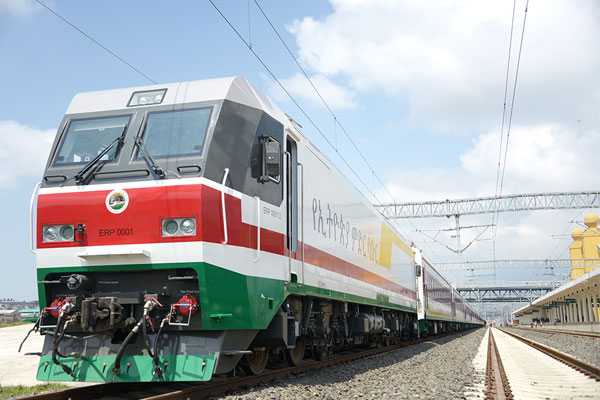
A new train stops at a railway station in suburban Addis Ababa, Ethiopia, Oct 1, 2016. A Chinese-built railway linking the Ethiopian capital and the port of Djibouti is expected to help the landlocked African country improve access to the sea and speed up a burgeoning industrialization process. [Photo/Xinhua]
ADDIS ABABA — A Chinese-built railway linking the Ethiopian capital and the port of Djibouti is expected to help the landlocked African country improve access to the sea and speed up a burgeoning industrialization process.
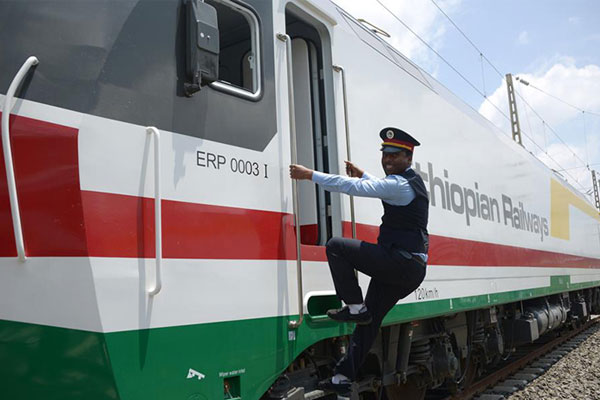
An Ethiopian driver gets on the train in Addis Ababa, Ethiopia, Oct 1, 2016. [Photo/Xinhua]
The railway, which is set to become fully operational on October 5, will be Africa’s first modern electrified railway.
The full length of the railway is 752.7 kilometers, with a designed speed of 120 km per hour. With a total investment of $4 billion, it is being constructed by the China Railway Group and the China Civil Engineering Construction Corporation.
“The railway is constructed on the basis of Chinese railway technology standards while taking into account the national conditions of Ethiopia and Djibouti,” said Zeng Deli, a project manager of the China Railway Group.
It was designed and constructed in a most economical way, taking only six years for its final completion, which should be viewed as some kind of miracle even in China, Zeng said.
For the Chinese contractors, the construction of a railway with a designed speed of 120 km per hour is not difficult. But it takes nothing short of a great feat to complete it with no compromise on quality and timeliness when there are inadequate construction materials and technical staff in Ethiopia.
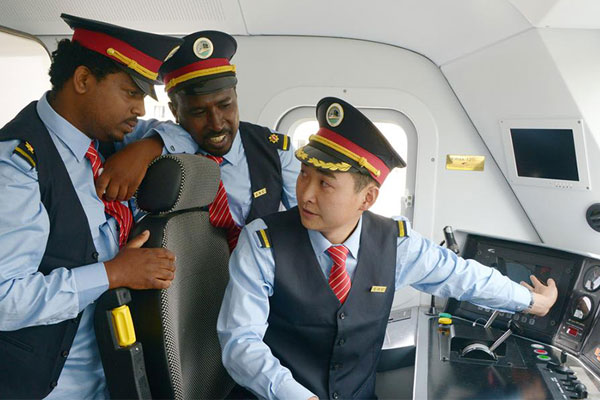
Chinese locomotive driver Liu Ji (R) trains his Ethiopian counterparts at a railway station in suburban Addis Ababa, Ethiopia, Oct 1, 2016. [Photo/Xinhua]
With careful planning and patient coordination, the Chinese firms managed to make sure construction materials imported from abroad arrived on time. To ensure good quality and no delay in construction, they even took the pains to manufacture the materials themselves, despite their higher cost.
For the Chinese firms, a lack of local technical personnel with adequate railway technology knowledge is a more serious problem.
For example, it took 20,000 workers to complete a specific section of the railway, and it would be impossible to have the posts filled all by Chinese, said Fu Xun, another project manager with the China Railway Group.
To tackle the challenge, the Chinese firms made the training of local technical workers a daily routine of their operations in Ethiopia. For the past few years, more than 15,000 local workers went through various training programs, thus ensuring enough manpower for railway construction and a talent reserve for future management of railway operations.
To protect its precious wildlife resources along the railway, the Ethiopian government set a high environmental protection protocol. To meet these high ecological standards, the Chinese companies did their best not to alter the original landscape along the railway. They also spent more than $4 million to build overpasses specially designed for safe animal crossover.
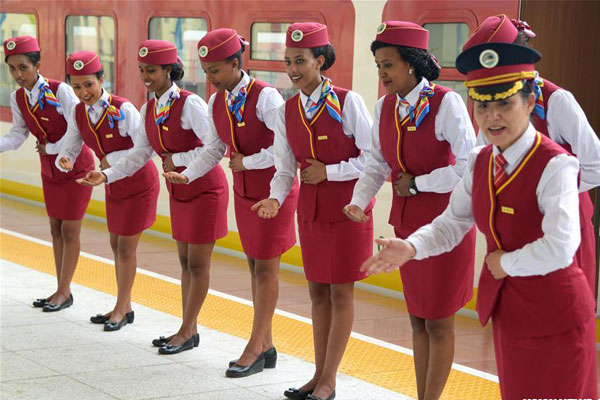
Chinese conductor Ding Jihua (R) trains Ethiopian attendants at a railway station in suburban Addis Ababa, Ethiopia, Oct 1, 2016. [Photo/Xinhua]
The modern standard-gauge Addis Ababa-Djibouti railway runs parallel to a decrepit meter-gauge version built over 100 years ago by Europeans. Over 90 percent of Ethiopia’s imports and exports, in particular energy and food, are made via the sea port of Djibouti. The capacity of the current road system has long been overwhelmed.
When the new railway becomes operational, transport time from Djibouti to the Ethiopian capital will be reduced from 7 days to ten hours.
Besides faster transport, the Chinese firms have an even greater ambition. That is, the railway will serve as a catalyst for Ethiopia’s national economic development.
They put forward industrial planning recommendations to the Ethiopian government, including the establishment of industrial parks in key cities, so that better transport benefits will be ensured in the middle and long run.
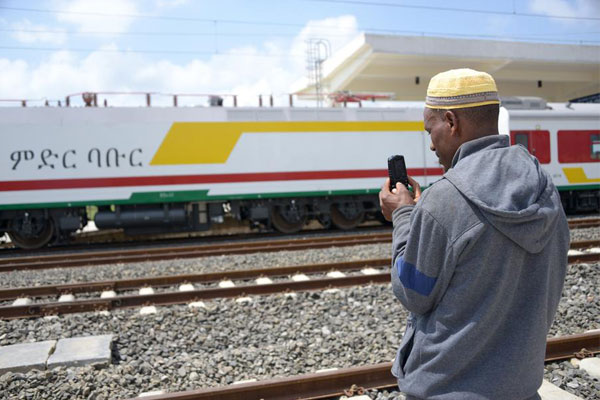
A local man takes photos of the new railway, which is Africa’s first modern electrified railway, in Addis Ababa, Ethiopia, Oct 1, 2016. [Photo/Xinhua]
The Ethiopian government endorsed the suggestions and put the railway into a key project category of its five-year national development plan. Industrial parks will be established in regional hub cities along the railway.
With improved transportation, the country will gradually transform an industrial model of exporting basic materials into one that focuses on deep processing. As a result, the country’s industrialization level will be elevated.
The Addis Ababa-Djibouti railway is only one of many major projects currently under way in the framework of China-Africa cooperation.
Following the successful Johannesburg summit of the Forum on China-Africa Cooperation in December last year, China has been deepening and expanding the scope of its industrial capacity cooperation with Africa.
More and more exemplary projects like the new Addis Ababa-Djibouti railway are set to prop up across the African continent and further help drive forward the modernization process in an unprecedented manner.
